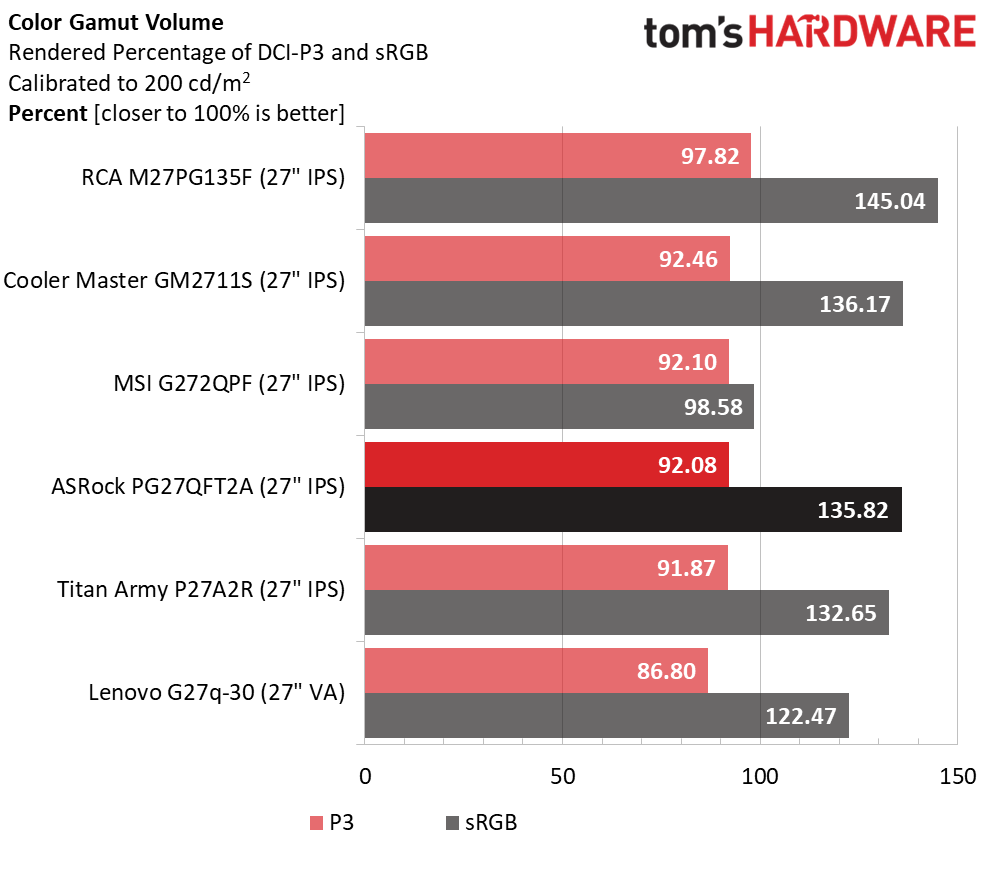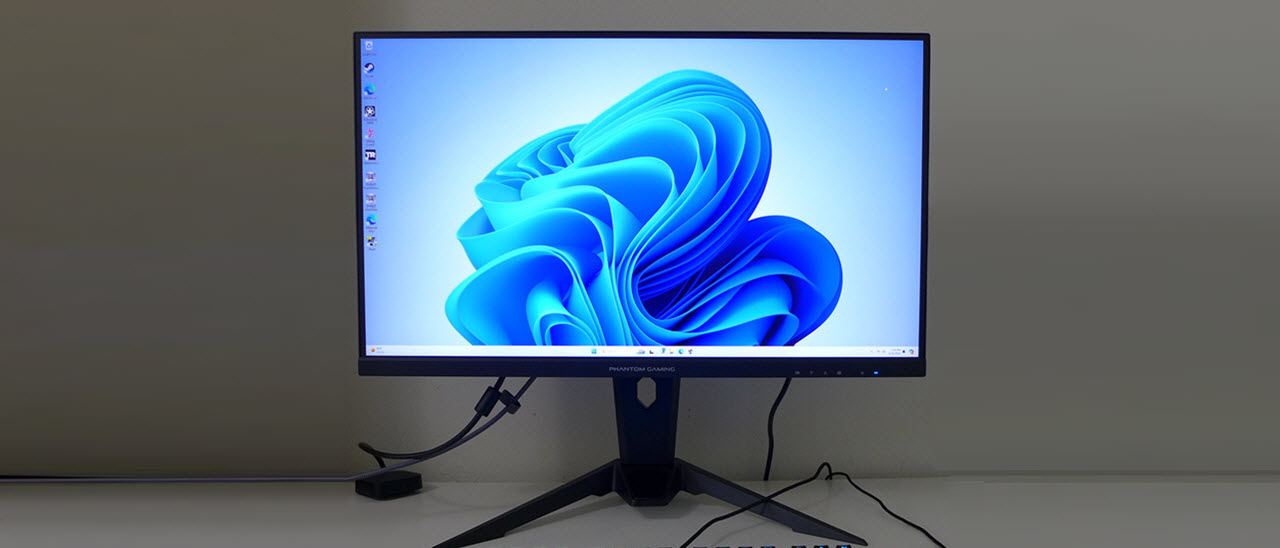Why you can trust Tom's Hardware
The PG27QFT2A has nicely-saturated color but needs a bit of tweaking to achieve greatness. Luckily, that’s not too hard to do.
Grayscale and Gamma Tracking
Our grayscale and gamma tests use Calman calibration software from Portrait Displays. We describe our grayscale and gamma tests in detail here.


In Standard mode, Normal color temp, the PG27QFT2A is a little cool in tone. The image doesn’t quite have the vibrance it could have. Gamma is spot-on, which is a good thing since there are no gamma adjustments in the OSD.
You can almost get there by just selecting the User color temp. I changed the red control by one click to get pro-level grayscale tracking. This is excellent performance.
Comparisons




The PG27QFT2A’s 4.08dE default grayscale score isn’t too bad given its low price but there is room for improvement. The next closest screen is Titan Army’s P27A2R, and it has better accuracy out of the box. But after calibration, the PG27QFT2A moves up the ranking. 0.69dE is about as good as it gets.
Gamma tracking is no problem here. The range of values is just 0.07, super tight, and the deviation is a tiny 0.45%. The actual value is 2.19, which is visually perfect.
Color Gamut Accuracy
Our color gamut and volume testing use Portrait Displays’ Calman software. For details on our color gamut testing and volume calculations, click here.
Get Tom's Hardware's best news and in-depth reviews, straight to your inbox.


The PG27QFT2A is definitely a wide gamut display but unusually, it’s under-saturated in red. Most similar screens are deficient in green which here is fully covered. Blue is also over-saturated and there are minor hue errors in the secondary colors. None of this adds up to significant problems but there is room for improvement.
Again, the User color temp is the PG27QFT2A saving grace. You can just select it and color will improve. One click of the red slider and it’s even better. With calibration, hue errors are eliminated and red is a tad more saturated. The average error value is now halved.
Comparisons


With a final color error score of 1.58dE, the PG27QFT2A is visually flawless. Its red under-saturation is not visible in a side-by-side comparison with other monitors. If you were to line up all the screens here showing the same image, it would be impossible to differentiate their color accuracy.
The PG27QFT2A is near the top of the class in color volume when compared to other value-priced screens. The RCA stands out from the field, but the others all come in around 92% of DCI-P3 except the Lenovo, which is visibly less colorful. The ASRock’s only flaw is its lack of an sRGB mode.
Test Takeaway: The PG27QFT2A is just OK out of the box, but with minor adjustments, it hits the marks well. The best part is gamma, which is spot on. And it is very colorful, more so than the average budget screen.
MORE: Best Gaming Monitors
MORE: How to Buy a PC Monitor
MORE: How to Choose the Best HDR Monitor
Current page: Grayscale, Gamma and Color
Prev Page Brightness and Contrast Next Page HDR Performance
Christian Eberle is a Contributing Editor for Tom's Hardware US. He's a veteran reviewer of A/V equipment, specializing in monitors. Christian began his obsession with tech when he built his first PC in 1991, a 286 running DOS 3.0 at a blazing 12MHz. In 2006, he undertook training from the Imaging Science Foundation in video calibration and testing and thus started a passion for precise imaging that persists to this day. He is also a professional musician with a degree from the New England Conservatory as a classical bassoonist which he used to good effect as a performer with the West Point Army Band from 1987 to 2013. He enjoys watching movies and listening to high-end audio in his custom-built home theater and can be seen riding trails near his home on a race-ready ICE VTX recumbent trike. Christian enjoys the endless summer in Florida where he lives with his wife and Chihuahua and plays with orchestras around the state.
